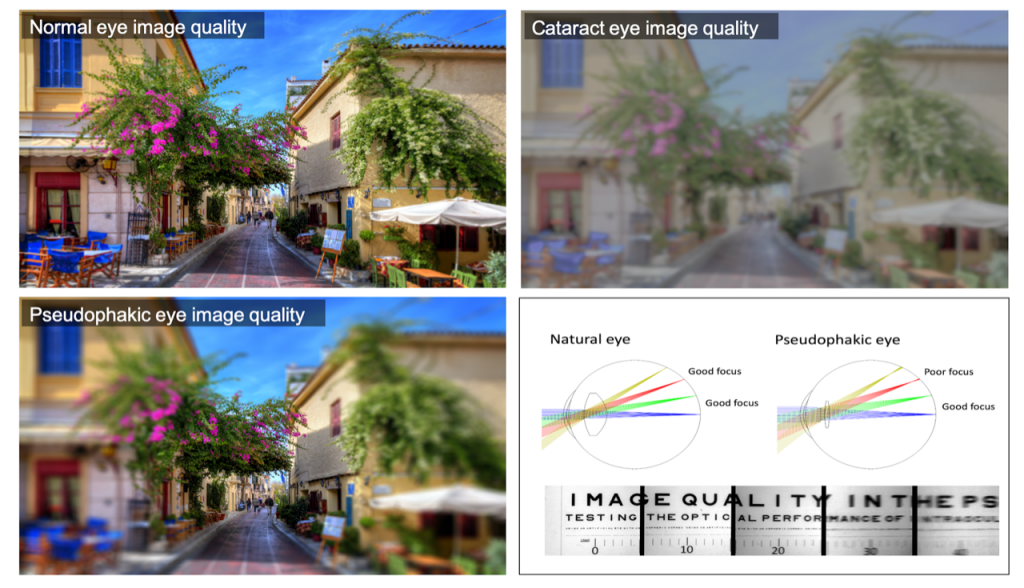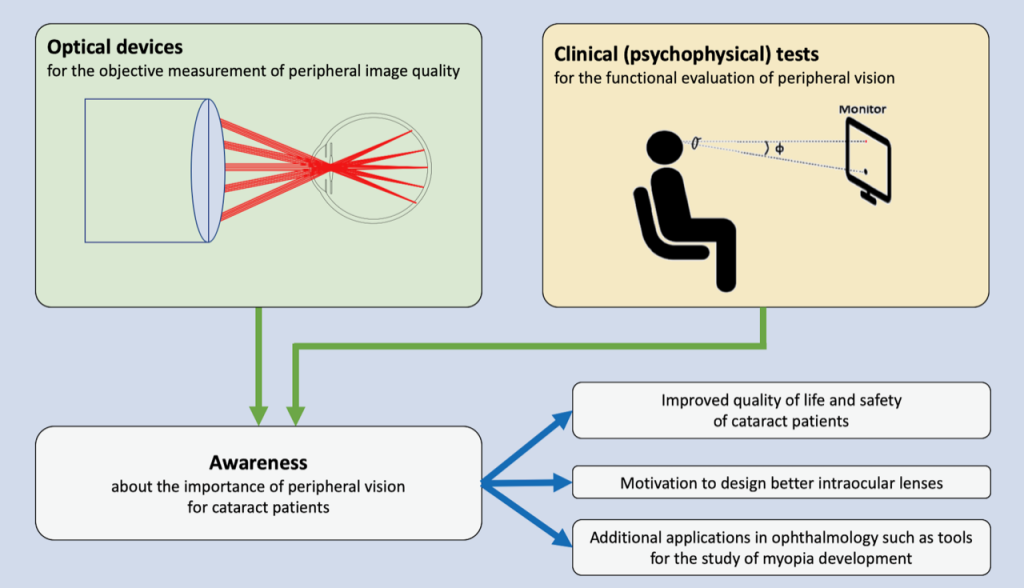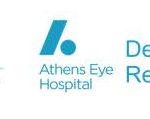More than four million patients undergo cataract surgery each year in Europe. Cataract surgery is considered safe and effective in restoring patient’s central vision. However, there is evidence that pseudophakic eyes (i.e. the eyes of patients that have undergone cataract surgery and are implanted with an artificial intraocular lens) may have sub-optimal image quality in the periphery of their visual field. The periVIQA project pertains to the systematic modelling, measurement and analysis of peripheral image quality in pseudophakic eyes. The research team will develop optical devices and clinical tests for the measurement of this peripheral image quality and the evaluation of the implications it may have in the patients’ safety in daily tasks such as walking or driving. Raising awareness among clinicians and patients about the importance of peripheral vision may lead to better surgical planning in the future and to the design of improved intraocular lenses.

Figure 1. Illustration of image quality in the normal human eye, with cataract development and after cataract surgery (pseudophakic eye). Poor focus and astigmatism in the periphery are known based on computer simulations and sparse bibliographic data. It is not known to what extent this loss of peripheral information affects the safety and quality of life of cataract patients after surgery.

Figure 2. Systematic study of peripheral image quality in the pseudophakic eye with new optical devices and psychophysical tests will raise awareness about the importance of peripheral vision in cataract patients which -among others- may lead to improved safety and quality of life of these patients.
In this project the Department of Research Athens Eye Hospital partners with the Laboratorio de Optica, Universidad de Murcia , the Colour & Vision Research Laboratory, University College London and Thrust CL.
Project PeriVIQA is supported by VELUX STIFTUNG, Switzerland.










